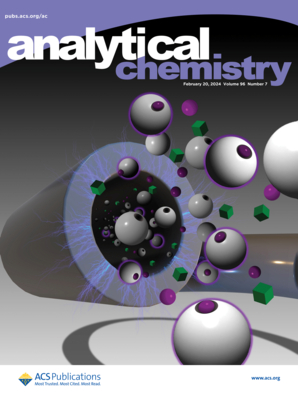Reconstructing Super-Resolution Raman Spectral Image Using a Generative Adversarial Network-Based Algorithm.
IF 6.7
1区 化学
Q1 CHEMISTRY, ANALYTICAL
引用次数: 0
Abstract
Raman imaging utilizes molecular fingerprint information to visualize the spatial distribution of a substance within the scanned area. Subject to its scanning mechanism, it usually costs a prolonged data acquisition duration for achieving high-resolution Raman images. In this study, we propose a generative adversarial network (GANs) based algorithm to significantly enhance both the Raman spectral imaging speed and spatial resolution. The proposed method was trained and evaluated on 186 hyperspectral Raman datasets acquired from unlabeled cells, and its reconstruction performance was quantitatively evaluated by the parameters of peak signal-to-noise ratio (PSNR), structural similarity index (SSIM), and root-mean-square error (RMSE). Univariate imaging and K-means clustering analysis (KCA) were both adopted to evaluate the preservation of biochemical information after image reconstructing. The results demonstrated that the proposed method effectively enhances spatial resolution by a factor of 2-4 while accelerating imaging speed by a factor of 4-16. Furthermore, transfer learning was utilized to adapt the pretrained model to different objects, validating its generalization capabilities and extending its universalities. This study highlighted the potential of deep learning for super-resolution Raman imaging, providing a promising pathway for high-throughput and real-time biochemical analysis.基于生成对抗网络的超分辨率拉曼光谱图像重建算法。
拉曼成像利用分子指纹信息来可视化扫描区域内物质的空间分布。受其扫描机制的限制,通常需要较长的数据采集时间才能获得高分辨率的拉曼图像。在这项研究中,我们提出了一种基于生成对抗网络(gan)的算法,以显着提高拉曼光谱成像速度和空间分辨率。通过对186个未标记细胞的高光谱拉曼数据集进行训练和评估,并通过峰值信噪比(PSNR)、结构相似指数(SSIM)和均方根误差(RMSE)等参数定量评价该方法的重构性能。采用单变量成像和k均值聚类分析(KCA)来评估图像重建后生化信息的保存情况。结果表明,该方法能有效地将空间分辨率提高2 ~ 4倍,同时将成像速度提高4 ~ 16倍。此外,利用迁移学习使预训练模型适应不同的对象,验证其泛化能力并扩展其通用性。该研究强调了深度学习在超分辨率拉曼成像中的潜力,为高通量和实时生化分析提供了一条有希望的途径。
本文章由计算机程序翻译,如有差异,请以英文原文为准。
求助全文
约1分钟内获得全文
求助全文
来源期刊

Analytical Chemistry
化学-分析化学
CiteScore
12.10
自引率
12.20%
发文量
1949
审稿时长
1.4 months
期刊介绍:
Analytical Chemistry, a peer-reviewed research journal, focuses on disseminating new and original knowledge across all branches of analytical chemistry. Fundamental articles may explore general principles of chemical measurement science and need not directly address existing or potential analytical methodology. They can be entirely theoretical or report experimental results. Contributions may cover various phases of analytical operations, including sampling, bioanalysis, electrochemistry, mass spectrometry, microscale and nanoscale systems, environmental analysis, separations, spectroscopy, chemical reactions and selectivity, instrumentation, imaging, surface analysis, and data processing. Papers discussing known analytical methods should present a significant, original application of the method, a notable improvement, or results on an important analyte.
 求助内容:
求助内容: 应助结果提醒方式:
应助结果提醒方式:


